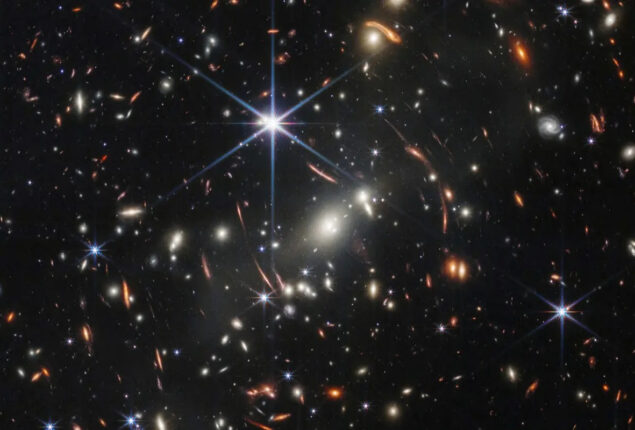Deep space black holes discovered preying on neutron stars
On January 5, 2020, astrophysicists detected a chirp from 900 million light-years...

Gluttonous Cosmic ‘black widow’: Heaviest-known neuron star.
The largest known neutron star, often known as a “black widow,” has been spotted by astronomers. It gained its size by consuming the majority of the mass of a stellar companion that was caught up in an unhappy cosmic union.
According to the researchers, the neutron star is frantically spinning at 707 times per second and has a mass that is around 2.35 times higher than our sun, which may be the greatest mass that such things may have before collapsing into a black hole.
A large star’s compact compacted core, which resulted from a supernova explosion at the conclusion of its life cycle, is what makes up a neutron star. The neutron star that the researchers describe is a pulsar, a sort of highly magnetized neutron star that emits electromagnetic radiation beams from its poles.
From the viewpoint of an observer on Earth, these beams appear to pulse as it spins, similar to the spinning light of a lighthouse.
It is known that just one other neutron star spins more swiftly than this one.
According to Roger Romani, director of Stanford University’s Center for Space Science and Astrophysics and a co-author of the study that was published this week in the Astrophysical Journal Letters, “the heavier the neutron star, the denser the material in its core.”
“Because it is the heaviest neutron star known, it contains the universe’s densest stuff. If it were any heavier, it would fall to a black hole and the contents would be hidden behind the event horizon, eternally hidden from view “Romani tacked on
The event horizon of a black hole is the boundary beyond which all matter, including light, is irretrievably dragged in.
The existence of this neutron star, according to Romani, “is an essential probe of these physical extremes as we do not yet know how matter works at these densities.”
According to Romani, the neutron star, officially known as PSR J0952-0607, is situated in our Milky Way galaxy in the direction of the constellation Sextans and is around 20,000 light years away from Earth. 5.9 trillion miles is the distance that light travels in a year, or a light year (9.5 trillion km). The Keck I telescope in Hawaii was used by the researchers to study it.
Thermonuclear fusion occurs in the cores of stars with masses of around eight or more times that of the sun, converting hydrogen into heavier elements.
The iron core collapses into a neutron star with a diameter of only about a city when it builds up to roughly 1.4 times the mass of our sun, with the remaining material being swept away in the supernova explosion.
This neutron star shares an orbit with another star in a configuration known as a binary system. The term “black widow” was given to the type of neutron star in honour of female black widow spiders that consume their male mates after mating.
It appears to have been born with a neutron star’s typical mass, which is about 1.4 times the mass of the sun.
However, due to its gravitational pull, which stole material from its companion star, it was able to grow to an apparent maximum mass before collapsing into a black hole, the densest known object.
Its companion star has been nearly stripped bare by the black widow, losing maybe 98 percent of its mass, leaving it at 20 times the mass of Jupiter, the largest planet in our solar system, a long cry from its previous enormity.
According to study co-author and University of California, Berkeley astronomy professor Alex Filippenko, “in a case of cosmic ingratitude, the black widow pulsar, which has devoured a large portion of its mate, now heats and evaporates the companion down to planetary masses and possibly complete annihilation.”
Catch all the Sci-Tech News, Breaking News Event and Latest News Updates on The BOL News
Download The BOL News App to get the Daily News Update & Follow us on Google News.